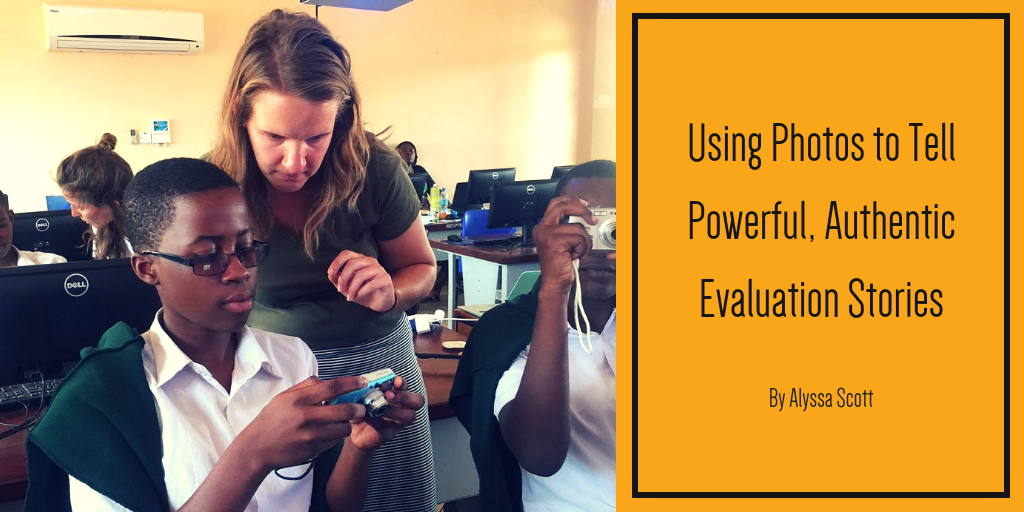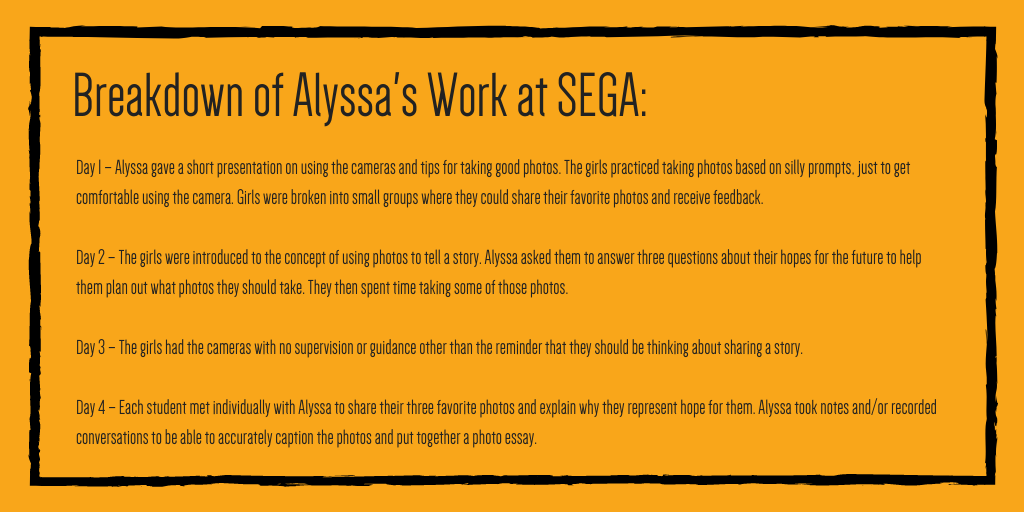
My name is Alyssa Scott, and I’m an Associate Writer here at The Improve Group. Being a writer, my relationship to evaluation is different than our consultants because I write about the results of an evaluation rather than conduct or facilitate the evaluation process. But the influence of evaluation is present everywhere, and I want to share a recent experience I had testing out my idea for a photo storytelling project for two different international NGOs, one in Kenya and one in Tanzania.
The Improve Group is known for designing mixed-methods evaluations and emphasizing the importance of both quantitative and qualitative data to reveal and validate the overall impacts of an initiative. And using our community-responsive approach, we create highly participatory tools and methods to ensure the voices of all community stakeholders are heard and honored.
Without realizing it, my photo storytelling project aligned with the values and work we do at The Improve Group. I believe that sharing authentic stories conveying the impact of a program means they should come directly from the people themselves to reduce bias. At the same time, not everyone wants to or can write their story well. So, the method of collecting authentic stories needs to be more accessible (and frankly exciting) than that.
In the digital age, everyone can take photos of what they’re doing to share with the world. I took the idea of photography storytelling and ran with it – putting cameras in the hands of people directly affected by nonprofit programs, teaching them how to use it, coaching them to think about and plan what photos to take to share a story about their life, and then sharing with the broader community.
One of my photo storytelling projects took place at SEGA Secondary Girls School in Morogoro, Tanzania. The goal was to work with girls who were part of the Journalism Club and teach them photography skills that could support their project work with the club. The result was the girls telling a story about their life at SEGA and their hopes for the future through photos.
 When I spent one-on-one time with the girls, I also asked questions to help me evaluate both the project itself and my facilitation of it. It’s so important to hear what went well and what didn’t. The responses of the girls were overwhelming. The excitement they had about being able to share their own story and what they hoped for their future was incredibly powerful.
When I spent one-on-one time with the girls, I also asked questions to help me evaluate both the project itself and my facilitation of it. It’s so important to hear what went well and what didn’t. The responses of the girls were overwhelming. The excitement they had about being able to share their own story and what they hoped for their future was incredibly powerful.
A picture is worth 1,000 words, but there’s more. Photos convey feelings, tell a story, and capture a moment in time forever. Combined with actual words from the photographer about why they chose to capture a particular moment, you’d be hard pressed to find a more powerful story. And that’s the power of qualitative data in action.
